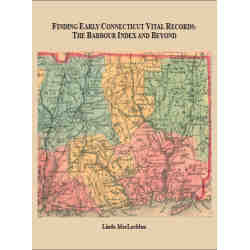
Following is a discussion of some of the things I have learned from studying the migration of people from Scotland and Ireland into the Maritimes.
Books about emigration usually talk of the forces that drove people out of their homelands – what we call the push factors: Highland clearances, breakdown of the traditional clan system, the suppression of awareness of being Scotland and Scottish (witness the late 18th century attempts to re-christen it “North Britain”), over-population, poverty and so forth.
Then come the reasons why migrating people voluntarily chose to go to a particular place – we call these the pull factors: employment opportunities, available land, improved social position, more peaceful environment, government inducements and the like. Also we could mention the influence of relatives and friends who had already emigrated. Both push and pull operated in the time period we are considering.
There is an important third factor to be considered, the means by which people in the British Isles could emigrate to North America.
The pioneer ship Mayflower is as good a place to begin as any. Experts on older shipbuilding calculate that the Mayflower was 113 feet long from the foremost beak to the stern-most end, and its main deck was no more than 25 feet at its widest point and more like half that in the hold. Somehow 102 passengers, plus a crew, together with their possessions and the necessary water and provisions for everyone, had to be crowded into that small vessel.
A century later, in the 1720s the typical vessel that conveyed passengers across the Atlantic had a burthen of 110 tons and by the 1770s the average ship was about 138 tons. Compared to almost any modern passenger vessel these dimensions are small indeed. The Mayflower, stripped of masts and rigging, could be packed in one container on today’s container ships, and there would be room left over to pile up masts and rigging.
Successive passenger acts, as well as the experience of the skippers themselves, gradually resulted in better provision for passengers at the same time that larger hulls were being constructed and more efficient arrangements of masts and sail were developed. Bad as conditions would be for emigrants in the nineteenth century, they had been considerably worse a hundred years earlier.
Not only were the vessels evolving towards being more commodious, but the terms and conditions under which people sailed changed, too. In the seventeenth century people who emigrated fell into one of three categories. A few, such as those in the Mayflower, chartered a vessel to convey them overseas. A different arrangement took place when a proprietor or a corporation received a land grant in the colonies with a stipulation that a certain number of immigrants be settled inside a set time. In such instances, the proprietor (e.g., William Penn) or the corporation (e.g., the Virginia Company) hired vessels to bring the settlers to their destination. Occasionally, as in the case of Halifax, the government was the one developing and populating a new township.
During the eighteenth century a new pattern developed. The population of British North America had grown to the extent that the flow of raw materials to Britain and the reciprocal movement of manufactured goods to America made it practical as well as profitable for entrepreneurs to go into the immigration business, One type of businessman in the field was the merchant who owned one or several ships engaged in the transatlantic trade. If a vessel was traveling homeward to Britain with a heavy cargo of produce, such as timber or fish, and had a much smaller and lighter cargo making the return trip, it was good sense to save on the cost of ballast by selling cheap passage to westward bound settlers. Thus, in one instance, trade begot immigration.
A second profession arose at that time, the immigration agent. Ship masters and owners would advertise in seaports that such and such a ship was preparing to sail in a specified number of weeks for a named port in America, perhaps Philadelphia, Boston or Halifax. For a fee, an agent might engage people on behalf of the shippers. Alternatively, an agent might recruit settlers and then find a vessel to carry his recruits overseas. Either way, it grew easier, as the eighteenth century advanced, for people who wished to go abroad to be put in touch with a vessel that would oblige them.
By the 1750s John Clark of Halifax (died Boston 1761) was doing this. In 1758 Robert Arthur undertook to connect Halifax with Ayrshire, Scotland, by annual trips. Gilbert Barclay of Boston was also offering passage between Scotland and New England by 1763, and Duncan Anderson was directing Scots towards the Bay of Chaleur by 1769. Alexander McNutt was enjoying a spotty career as an emigration agent between Northern Ireland and Nova Scotia and New England at that period. John Dick, a Scot based in Rotterdam, was largely responsible for recruiting and shipping the “Foreign Protestants” who came to Nova Scotia between 1750 and 1752. The professions of agent and shipper were fully developed in the mid-1700s. The means of connecting push and pull had been achieved.
Editor’s Note: Mr. Punch was the author of two collections of emigration records for the Canadian Maritimes, one devoted to Scots, the other to the Irish. For more information on one or more of these books please visit one or more of the following URLs:
- Erin’s Sons: Irish Arrivals in Atlantic Canada 1761-1853. Volume I
- Erin’s Sons: Irish Arrivals in Atlantic Canada 1761-1853. Volume II
- Erin’s Sons: Irish Arrivals in Atlantic Canada 1751-1858. Volume III
- Erin’s Sons: Irish Arrivals in Atlantic Canada to 1863. Volume IV
- Some Early Scots in Maritime Canada. Volume I
- Some Early Scots in Maritime Canada. Volume II
- Some Early Scots in Maritime Canada. Volume III





